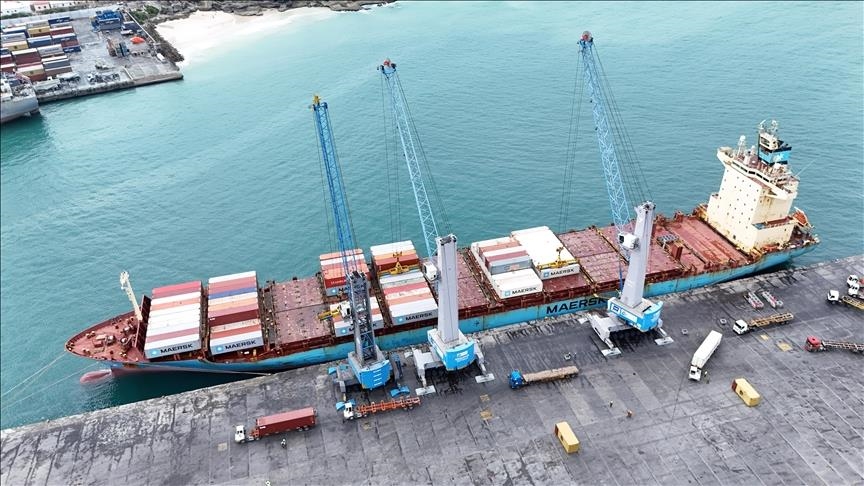
MOGADISHU, Somalia
Turkish conglomerate Albayrak is driving the modernization and daily operation of Mogadishu Port, Somalia’s main entry point for goods and its link to global trade.
Ahmet Sami Isler, chair of the Somalia Business Council at Türkiye’s Foreign Economic Relations Board (DEIK), told Anadolu that the group first arrived after President Recep Tayyip Erdogan’s landmark 2011 visit to the country.
He said the initial focus was humanitarian but soon shifted to building long-term infrastructure as drought worsened:
“We decided to do something permanent, not just to get through the day,” Isler said.
“We have been operating this port for about 11 years now with all kinds of investments, which we know have been of great importance to the state — we’re satisfied with Somalia and we hope Somalia is satisfied with us, too,” he added.
Isler described Mogadishu Port as Somalia’s commercial lifeline, noting that roughly 70% of goods entering the country come from Türkiye and that bilateral trade volume stands near $500 million.
Beyond the port, Albayrak rebuilt the war-damaged Digfer Hospital in 2012, turning it into the Mogadishu Somalia–Türkiye Recep Tayyip Erdogan Training and Research Hospital. It also built Türkiye’s largest embassy compound in Mogadishu in 2016 and undertook construction of the Somali Presidential Complex.
Isler acknowledged Somalia’s security challenges but urged Turkish entrepreneurs to explore the market:
“Everything in Somalia comes from outside — there are no factories here, no investment, no tourism,” he said. “We need businesspeople to bring these back — we’re calling on Turkish businesspeople and entrepreneurs to come to Somalia and see it for themselves.”
Umut Yurdakul, general manager of Mogadishu Port, told Anadolu that Somalia relies almost entirely on imported goods because local production is minimal. He said imports of Turkish products have declined recently due to shifting global logistics and geopolitical instability but Türkiye remains Somalia’s top supplier alongside India, China and Middle Eastern states.
"The construction of the port began in 1973 and continued gradually until
1983, but with the civil war that began in 1991, the construction ceased until 2006 — during that period, Somali people were isolated from all products and developments, so measures were then taken to develop trade and improve the standard of living," he said.
Albayrak took over the port’s operation and modernization in late 2014 to raise it to international standards.
“In a sense, Somalia reopened to the world thanks to this port,” Yurdakul said.
He added that Somalia’s rail and road networks remain weak, leaving the port as the country’s primary entry point for goods. Somalia has more than 3,300 kilometers of coastline with scattered settlements and small local ports, but none match Mogadishu Port’s capacity.
Somaliland, an unrecognized region between Djibouti and Somalia, has a major port on the Gulf of Aden, Yurdakul noted, but it is still smaller than Mogadishu’s facility.
“Goods entering via here are distributed throughout the country and our port is also used as a collection center,” he said, adding that food, cement and iron for reconstruction all pass through the site.
“The port is the lifeline of the country,” Yurdakul said.
Anadolu Agency website contains only a portion of the news stories offered to subscribers in the AA News Broadcasting System (HAS), and in summarized form. Please contact us for subscription options.







